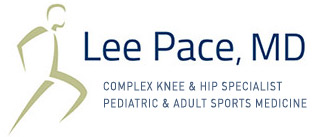The trochleoplasty procedure is a reshaping of an abnormal trochlea. Ideally, the trochlea is shaped like a “V” or a “U” but for many people with patellar instability the trochlea is flat or is convex like and upside down “V” or “U”. The goal of the trochleoplasty is to create a more normally shaped trochlea that allows the patella, or kneecap to fit properly.
During surgery, the cartilage of the trochlea is safely elevated from the underlying bone. Extra bone is removed and the remaining bone is reshaped to create a groove to match the shape of the patella. The cartilage is then molded to fit the new groove and held in place with resorbable suture and suture anchors. The sutures lay on top of the cartilage and dissolve in about 6-8 weeks while the suture anchors are placed below the level of the cartilage and gradually turn to bone over 4 -5 years.
The procedure is most commonly performed through an open incision but there are a select few patients with more mild dysplasia or very specific bump patterns that can be managed well with an arthroscopic trochleoplasty.
In addition to the bony reshaping of the trochlea, soft tissue rebalancing surgery should be performed at that same time. There is a ligament on the inner portion of the kneecap called the medial patellofemoral ligament, or MPFL, that gets stretched out and becomes incompetent in the setting of recurrent instability. Conversely, a ligament on the outer portion of the kneecap, called the lateral retinaculum becomes overly tight. Thus, whenever a trochleoplasty is performed, a MPFL reconstruction and lateral retinacular lengthening is also performed to rebalance these ligaments and optimize kneecap stability.
Postoperative Care After Medial Patellofemoral Ligament Reconstruction
After surgery, immediate weightbearing and full bending and straightening of the knee is encouraged. Crutches are for comfort and a brace is seldom if ever worn for more than a few days. Physical therapy starts within a week or so after surgery. Complete recovery is variable and patient dependent. Some patients can rehabilitate and be back to all their activities within 3-4 months while others may take 6 months or more.





